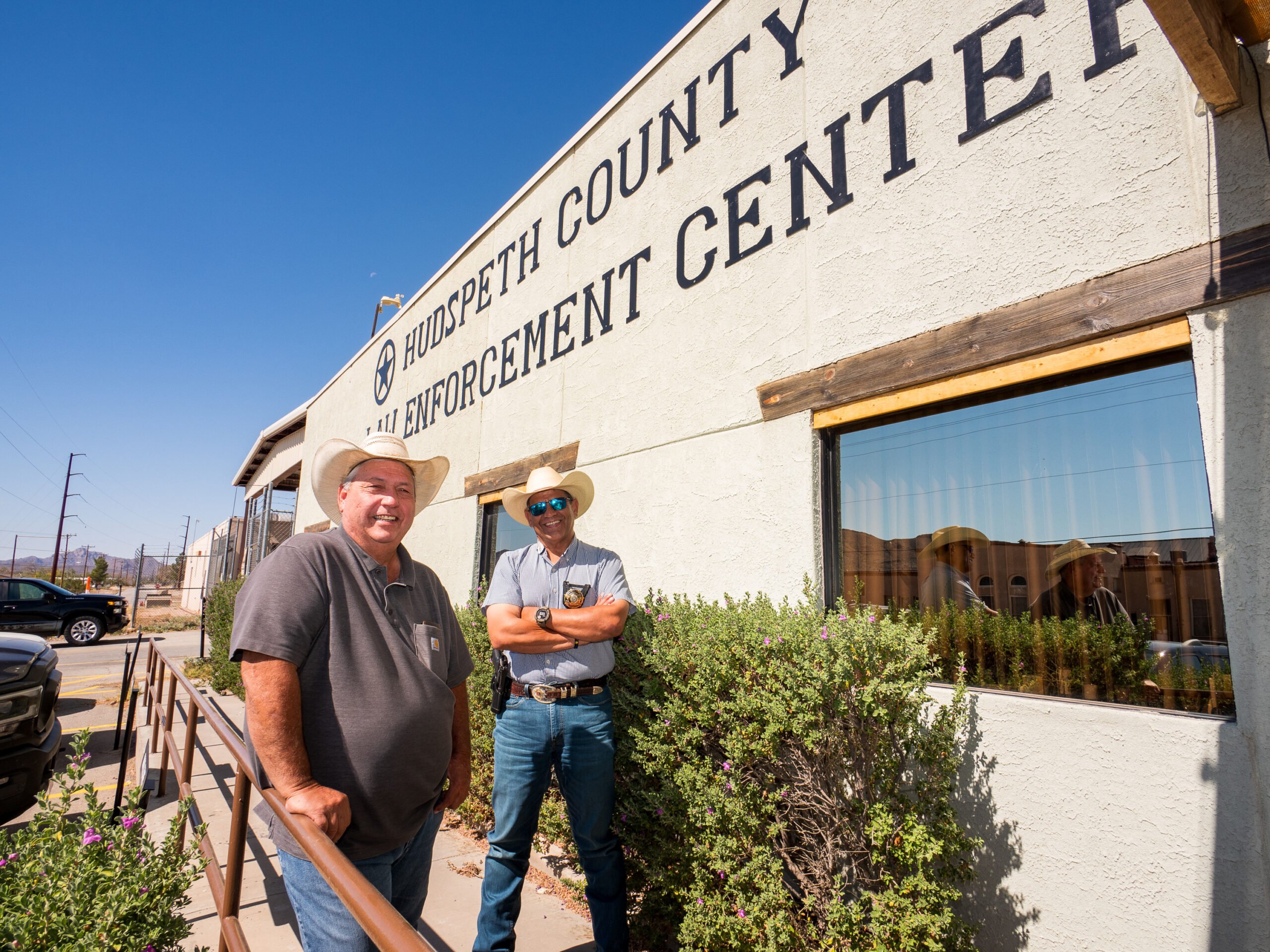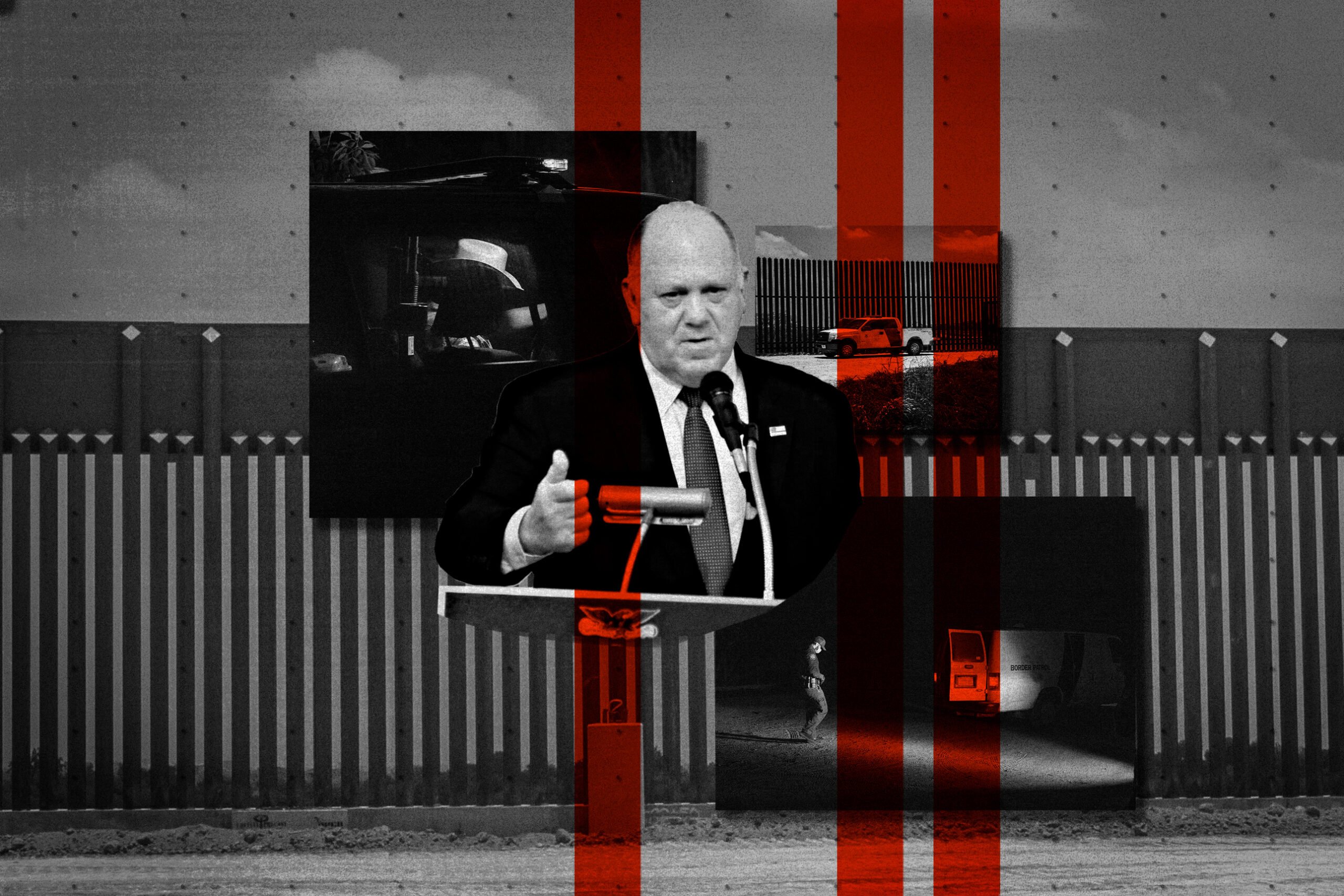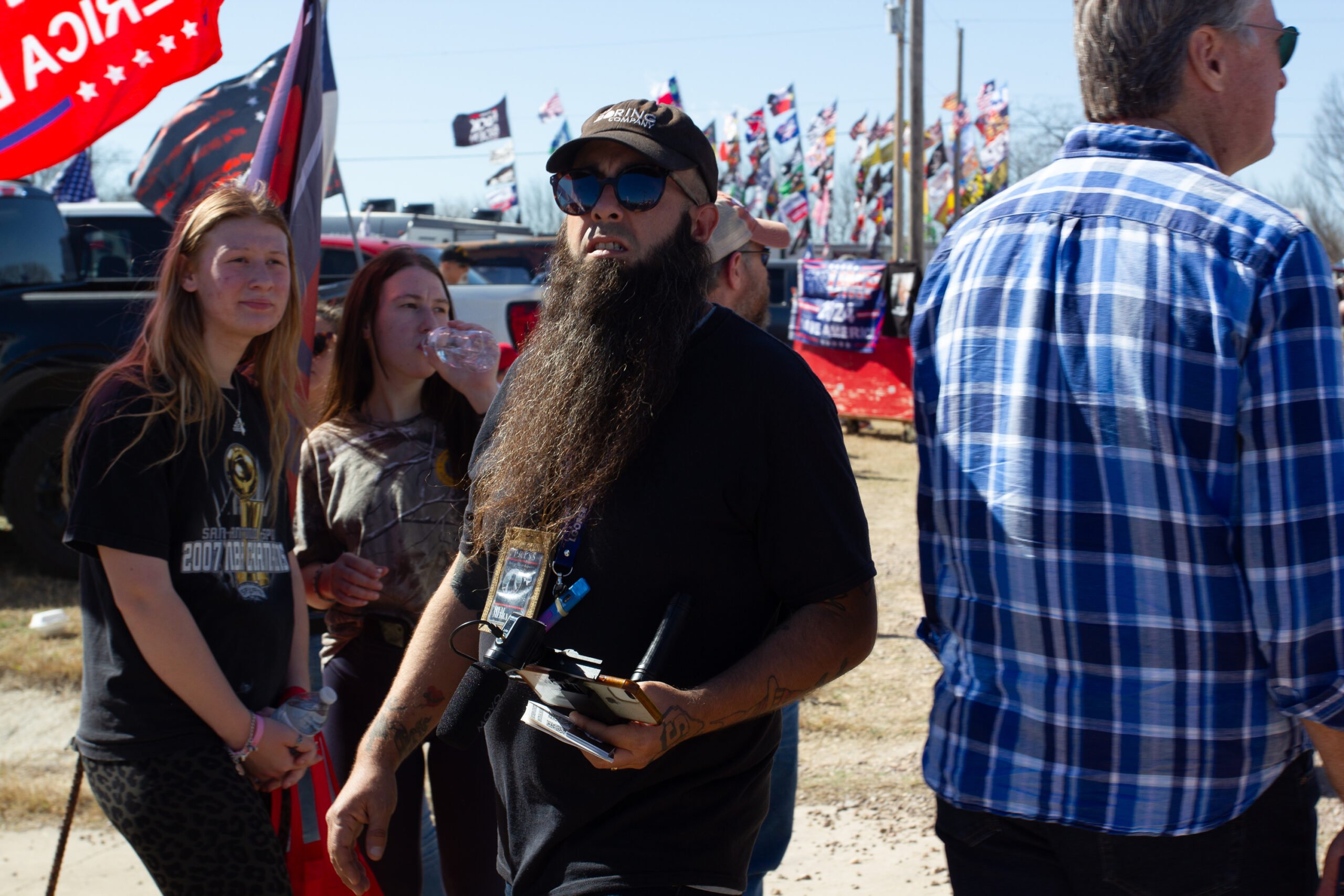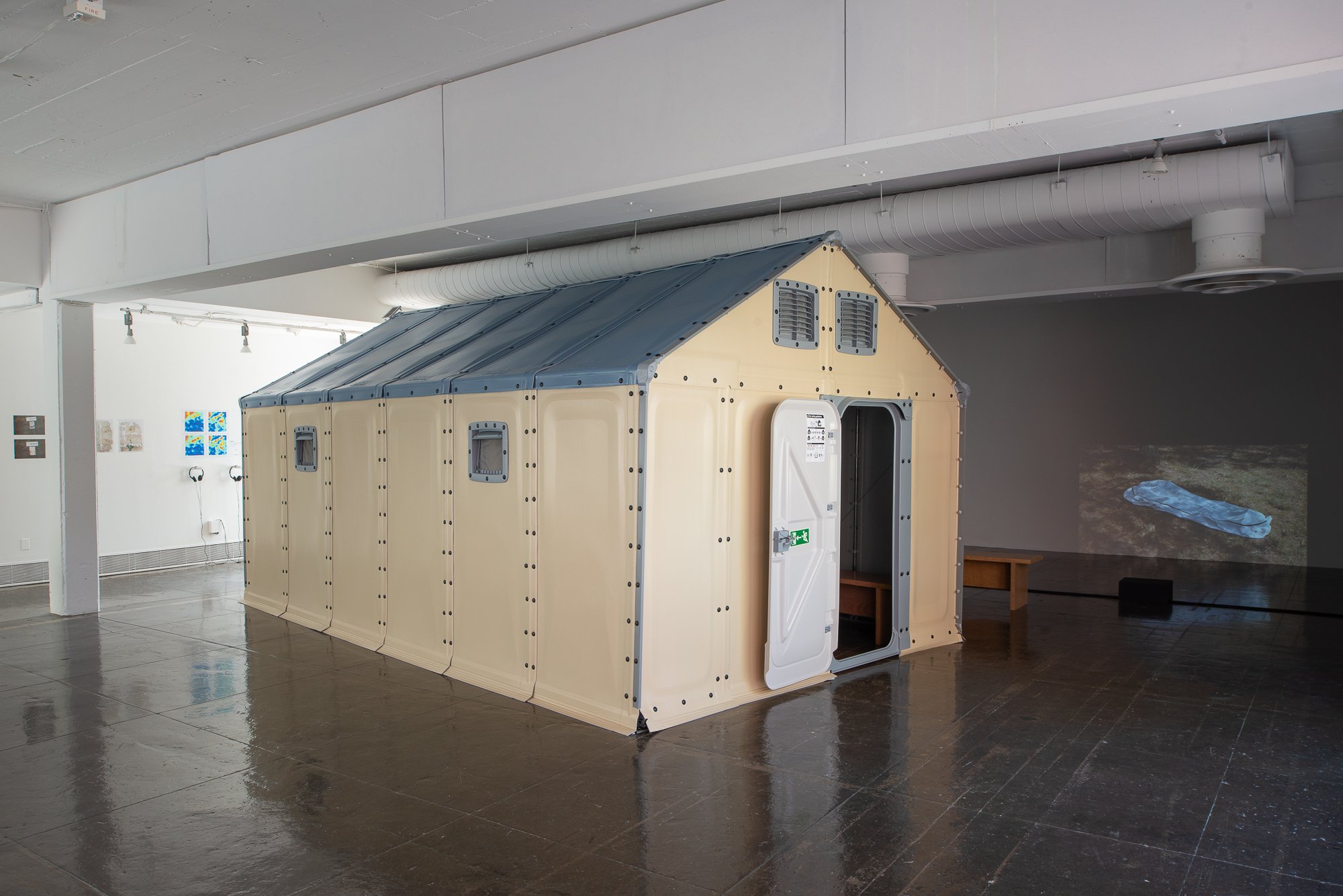
A San Antonio Art Show Quietly Foregrounds Migrants’ Stories
More people are displaced than ever before — nearly 69 million. The scale of that crisis is hard to grasp, but visitors to One to Another will see it in a new light.
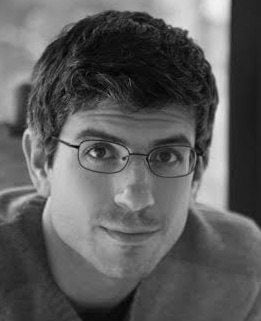
Ours is an era of mass displacement. At no other point in history have so many people around the world been forced to leave home. The United Nations High Commissioner for Refugees (UNHCR) now counts 68.5 million forcibly displaced people worldwide, including 25.4 million international refugees, 10 million stateless people and 3.1 million asylum-seekers. This last is the term preferred by the U.S. government for the steady stream of displaced people arriving at the border, often in Texas, from nations afflicted with gang and political violence, hoping, usually in vain, to be absorbed into our shrinking refugee system.
The stories of these millions are profoundly diverse, each one individually heartbreaking. There’s no way to hope to visualize the scale of the crisis. Why even try? For better and for worse, this is not a question that seems to trouble the Borderland Collective, the art-making team behind One to Another, a small but wide-ranging exhibition on display until December 30 at Artpace in San Antonio.
One to Another does not attempt to propose a thesis about migration or to apply any sort of bold aesthetic lens to link the accoutrements of displacement it exhibits. Instead, the artists behind the show — principally Mark Menjivar, Molly Sherman and Jason Reed — are content to display found objects and documentary evidence, raise questions, kindle conversation and for the most part step back as imaginative thinkers to let the audience do that sort of work for themselves. It’s a minimalist approach that mostly eschews the right-brained side of art-making, focusing instead on research, public outreach and exhibition design. Though this strategy may leave some audience members cold, viewers will come away with new, visually compelling reference points for thinking about the displacement crisis.
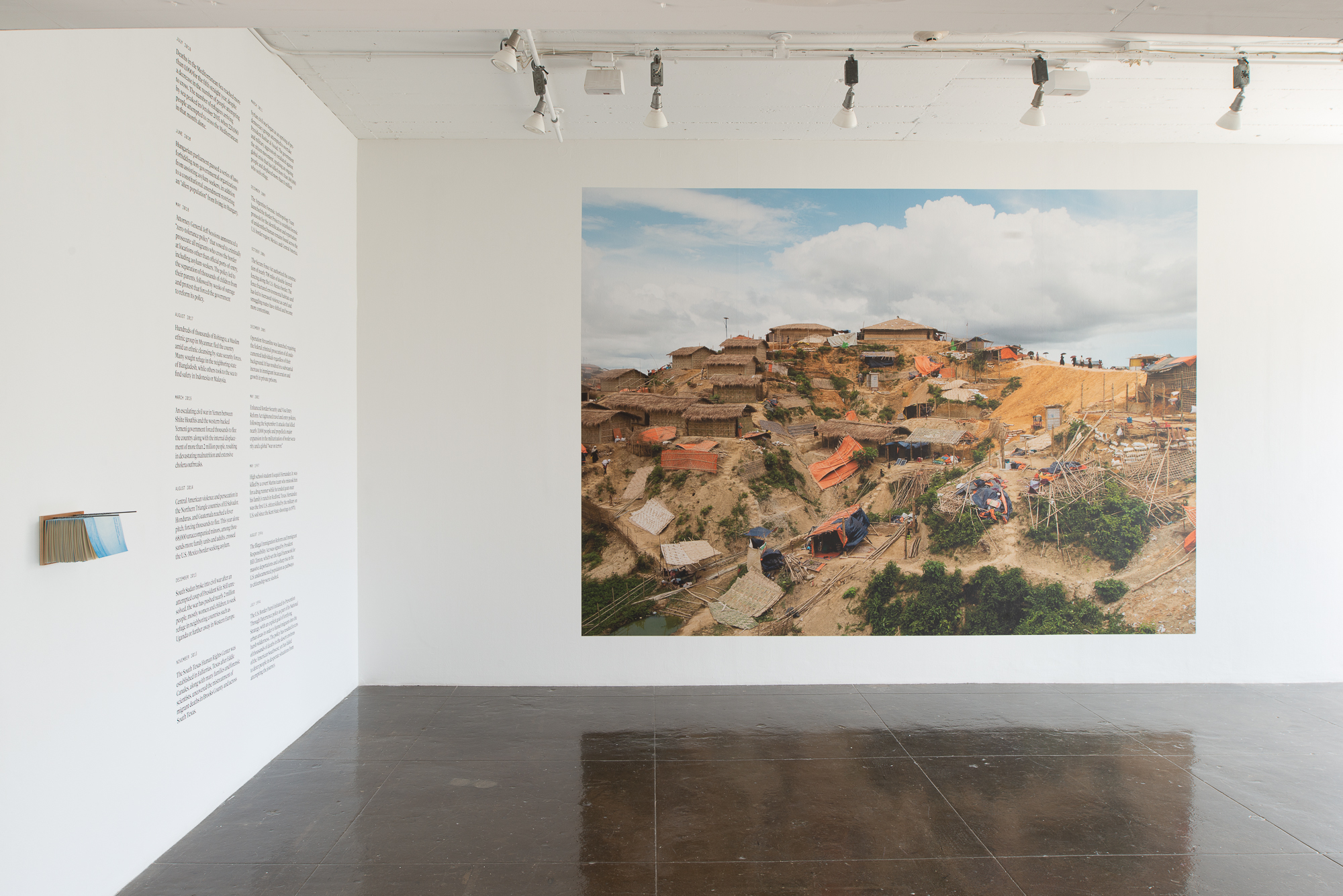
The show features three main sections: two investigations into specific migrant problems on the second floor of Artpace, plus an interactive element involving the sharing of personal migration stories on the first floor. The first investigation concerns the challenge of building durable shelters at environmentally fragile refugee camps in developing nations, such as those in Bangladesh now serving Rohingya Muslim refugees from violence in Myanmar. The start-up Better Shelter attempts to address this problem by producing pre-fabricated collapsible structures designed to withstand monsoons. These modular shelters ship flat; can be assembled in four hours by a team of four people; and feature a lockable door, ventilation and a curtain for privacy between parents and children. Better Shelter has donated a working model to Borderland Collective, and visitors to One to Another can take their time sitting inside and soaking up the feel of the space as a video from a hearing at the UNHCR plays projected on the back wall.
It’s difficult to develop warm feelings for these glorified tents. They feel frighteningly institutional: the idea of home stripped to its most basic elements. The mere fact that the product exists is evidence that the world’s refugee problem is endemic and only expected to grow. In a word, it’s ugly. But step outside the model unit, into the presence of a massive photograph of improvised shelters in Bangladesh ruined by mudslides, and viewers will be forced to admit that the product has an obvious utility and even beauty.
“Basically, an airliner crashes every year on the border, and everybody dies, and nobody knows that it happens.”
The second investigation concerns unmarked migrant graves in South Texas. Many of the dead involved in this case study hail from El Salvador, Guatemala and Honduras, or the “Northern Triangle.” This element of the show grew out of a 2014 Borderlands Collective exhibition, Northern Triangle, which has traveled widely. That show helped introduce the collective to Eddie Canales, founder of the South Texas Human Rights Center and an advocate for the exhumation and DNA testing of unidentified remains of migrants in Brooks County, a mostly rural area between McAllen and Alice.
One to Another includes a looped video with footage of a Brooks County sheriff searching the brush for human remains, an excavation of a mass grave in a rural cemetery, and a university lab where remains are DNA-tested and checked against samples from Central American families who are searching for their missing dead. Like the Better Shelters, but much more so, these exhumations are disturbing necessities of modern life, morbid enterprises that feel more admirable and inspiring the longer one sits with them. The video is supplemented by a few wall hangings, including a reproduction of a letter from a child to his father, found on a dead body in Brooks County; a photo of a grave for unidentified remains; and an image from a ground-penetrating radar survey of a rural graveyard, used to establish the existence of an unmarked mass grave of migrant remains dumped there by the county.
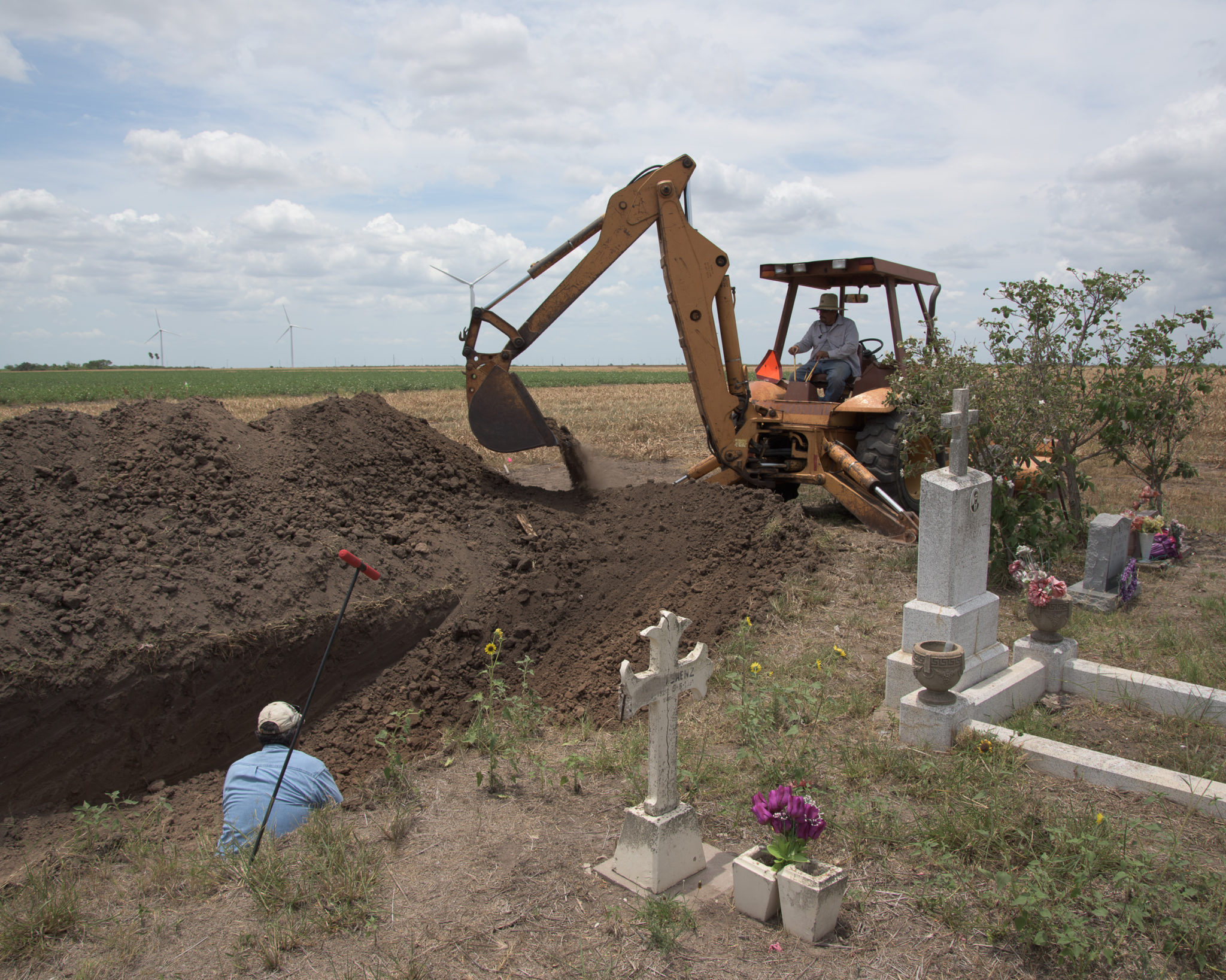
Asked to explain the relationship between the refugee shelter and migrant exhumations elements of One to Another, Reed offers that, with a background in geography, he is interested in the land itself and how it is involved in the movement or restriction of peoples. He sees symmetry in the juxtaposition of migrant resting places above and below the surface of the earth. “Those are two things that are happening globally,” Reed says. “We’re thinking about, where do people go when they’re fleeing? Often, in South Texas and Arizona, it’s that they die.” Reed invokes a metaphor borrowed from a colleague in the struggle for immigrant justice: “Basically, an airliner crashes every year on the border, and everybody dies, and nobody knows that it happens.”
One to Another does not force this rhetorical link, however. Borderlands Collective is so committed to the social-practice model of art-making, which looks with skepticism upon bold authorial statements, that the first floor of Artpace is devoted to moving audience voices to the center. Visitors are encouraged to share their own migration stories for a book project and to write their own migration questions on notecards. The unspoken hope is that, by creating a sanctuary for thinking, talking and sharing information about the mass-displacement crisis, one question will lead to another, and eventually, perhaps, to a solution.
